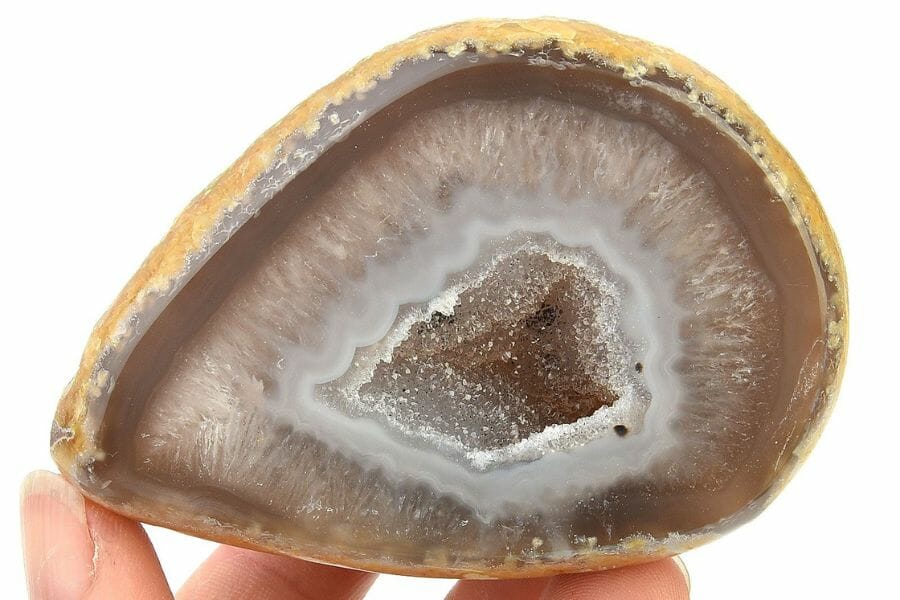Geodes are like nature’s surprise eggs, filled with sparkling crystals inside a plain-looking rock. Our state is a treasure trove for these hidden gems, with its many different landscapes that make it perfect for rock hounds.
If you’re itching to crack open your own crystal-filled wonder, you’re in the right place!
This article will show you the best spots in our state to find geodes. We’ll also share some handy tips to make your geode hunting adventure a success.
So grab your hammer and get ready to discover the beauty hiding in ordinary-looking rocks all around this state!
How Geodes From Here
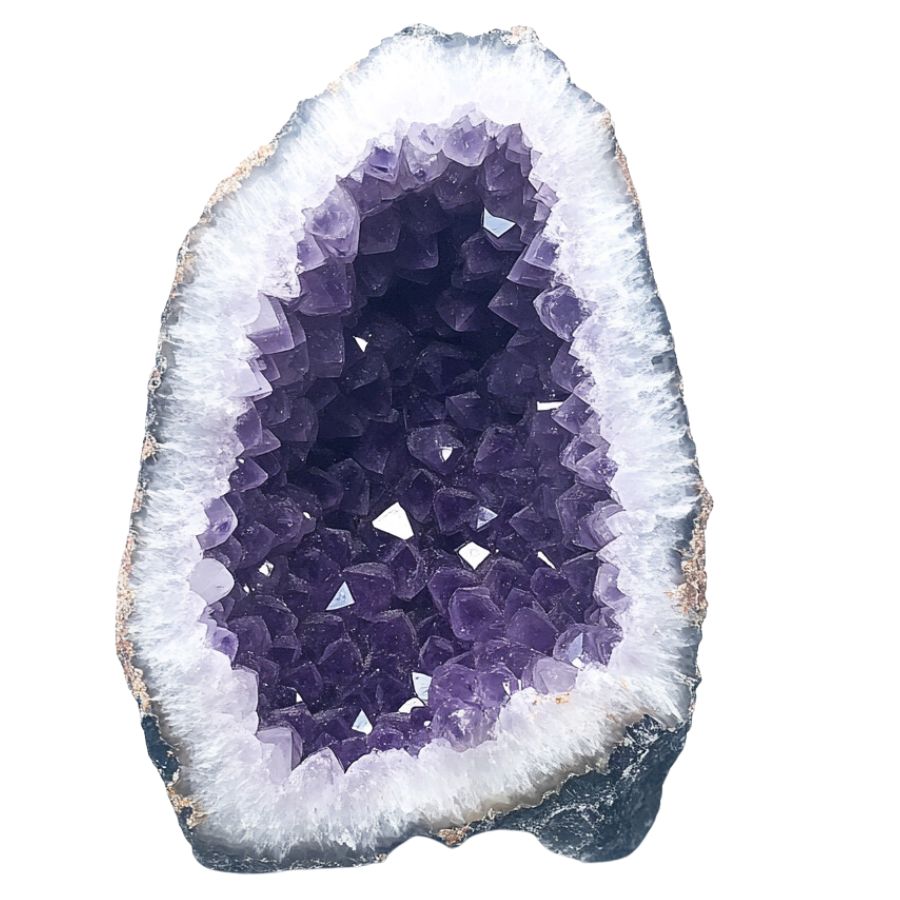
Geodes form when bubbles in volcanic rocks or spaces in sedimentary rocks get filled with minerals over time.
First, water rich in minerals like quartz or calcite seeps into the hollow space. As the water evaporates, it leaves behind the minerals, which slowly build up layer by layer.
Eventually, these minerals create a crystal lining inside the geode. The outer shell stays rough, while the inside becomes a sparkling treasure.
The process can take thousands, even millions, of years, making each geode a unique and beautiful time capsule of Earth’s natural forces.
The Types Of Geodes Found in the US
There are many fascinating varieties of geodes that can be found across the United States, including in our own state. Each type is distinctly beautiful and intriguing:
Amethyst Geode
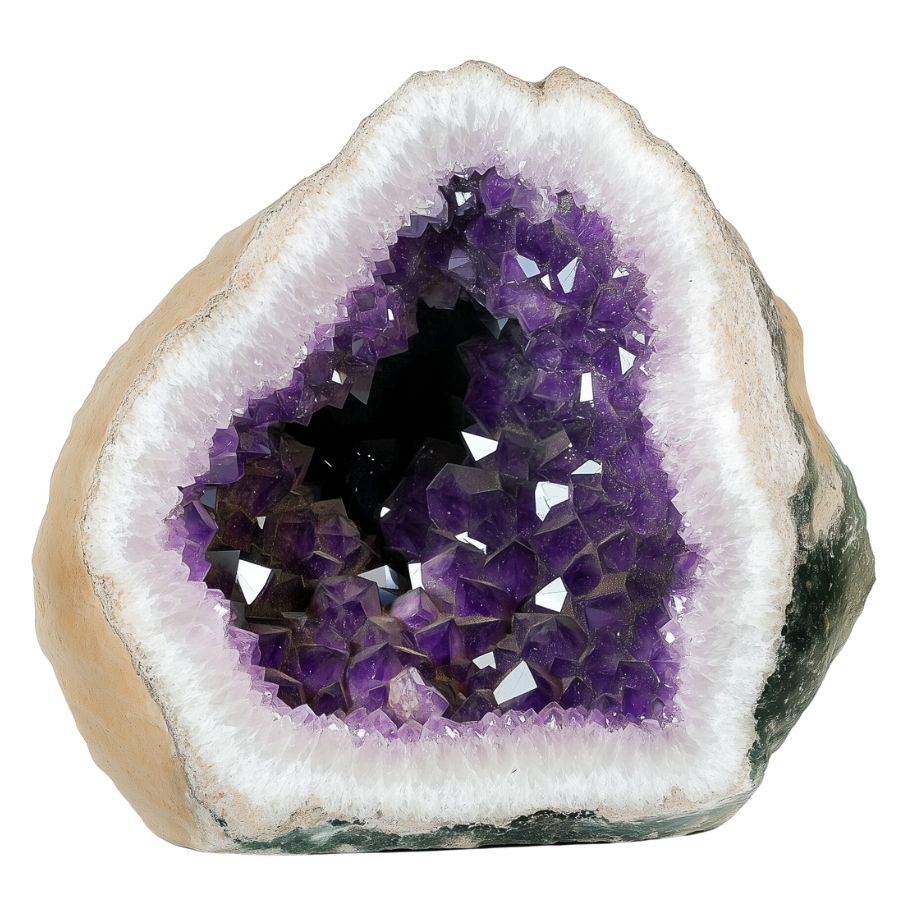
Amethyst geodes look plain on the outside, like a potato. But crack them open, and you’ll find stunning purple crystals. These crystals can be light lavender or deep purple.
The structure of crystals inside can vary widely. Some are tiny and densely packed, creating a sparkling surface. Others form large, distinct points that jut inwards.
The color range is impressive too, from pale lilac to deep royal purple. Some amethyst geodes develop unique features. “Stalactites” of amethyst might hang from the top.
In rare cases, you might find a water bubble trapped inside, a remnant from the geode’s formation millions of years ago.
Citrine Geode
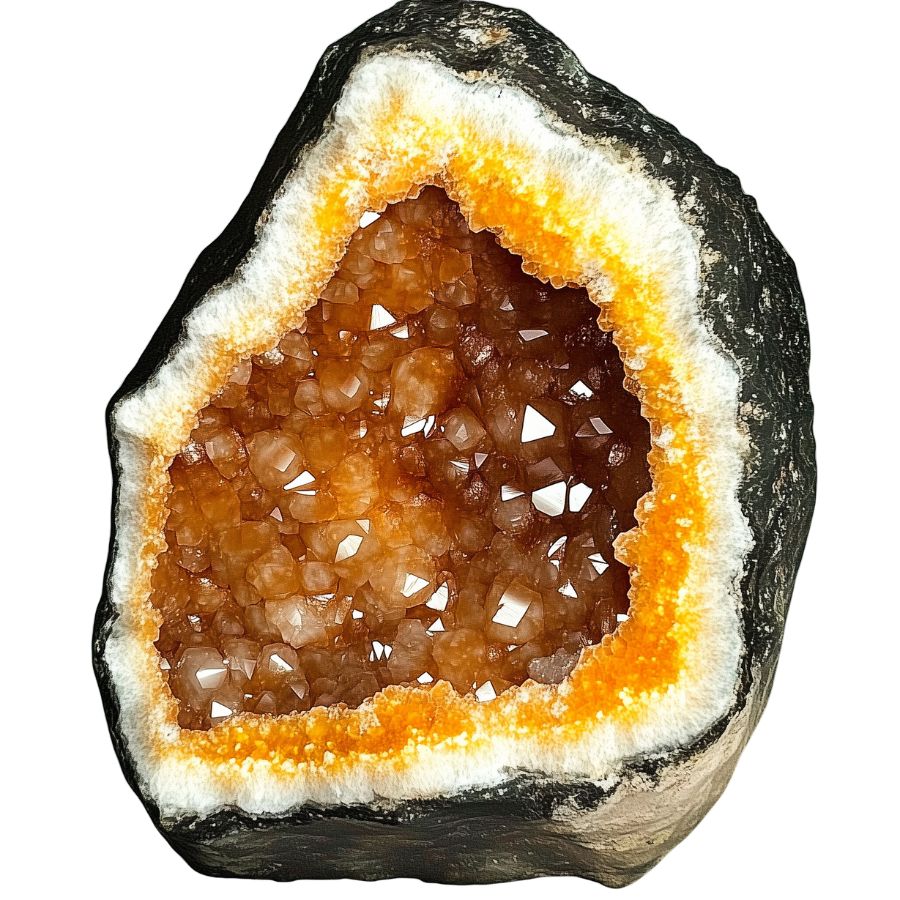
Citrine geodes are eye-catching rocks with golden yellow to orange crystals inside. They sparkle when light hits them, looking like sunshine trapped in stone. The colors come from iron mixed in with the quartz.
Unlike many gemstones, citrine’s color is often evenly distributed throughout the crystal.
Most citrine on the market isn’t natural. It’s actually heat-treated amethyst. This process turns the purple amethyst into vibrant citrine. Natural citrine is rarer and often has a more subtle color.
Pyrite Geode
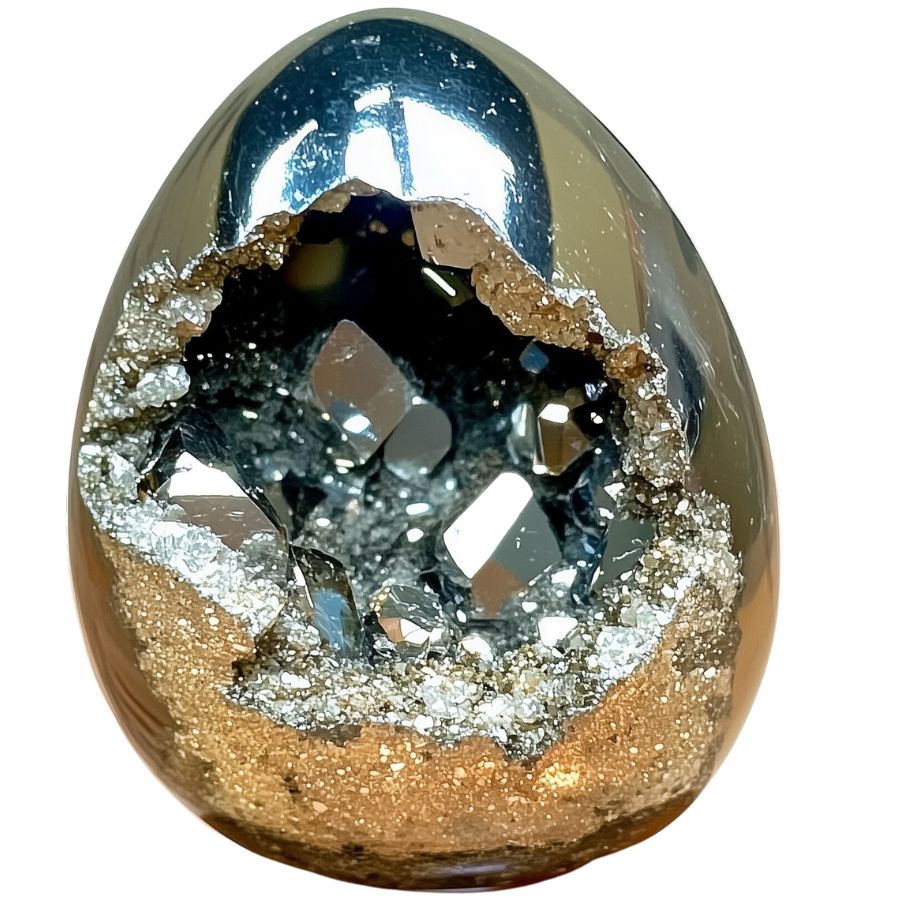
Ever cracked open a rock and found gold inside? Well, not real gold, but something that looks just like it. That’s a pyrite geode. Pyrite is called “fool’s gold” because it’s so shiny and golden.
Inside these geodes, pyrite forms in cool shapes. Sometimes it’s perfect cubes. Other times its clumps or even round balls called “pyrite suns”.
Pyrite has a fun history. People have been mixing it up with real gold for thousands of years. That’s how it got its nickname.
Selenite Geode
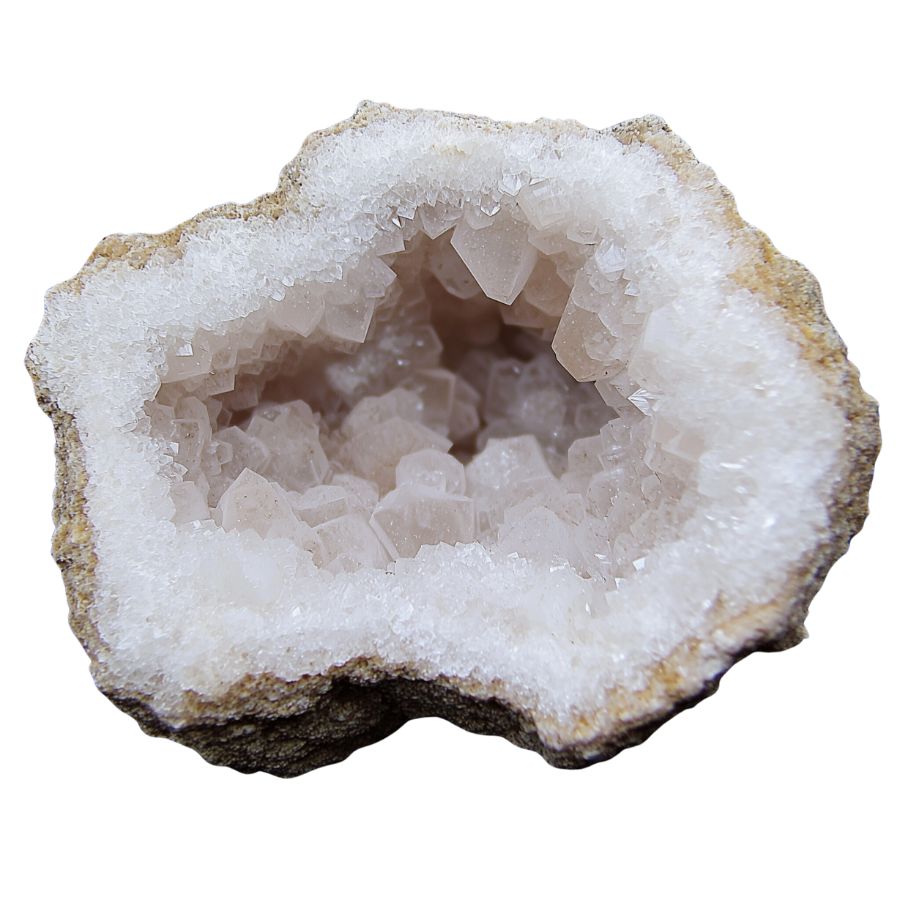
Selenite geodes stand out from the crowd. They’re white and see-through, with a glassy look. When you open one up, you’ll see crystals that look like they’re made of ice or moonlight.
Unlike harder geodes, selenite is soft. You can scratch it with your fingernail! This softness means you need to handle it carefully. But it also means selenite can be shaped into beautiful forms easily.
One cool thing about selenite is how it plays with light. Hold it up to a lamp, and you’ll see the light shine right through it. This makes selenite geodes popular for decorative lamps and light fixtures. They add a magical glow to any room.
Celestite Geode
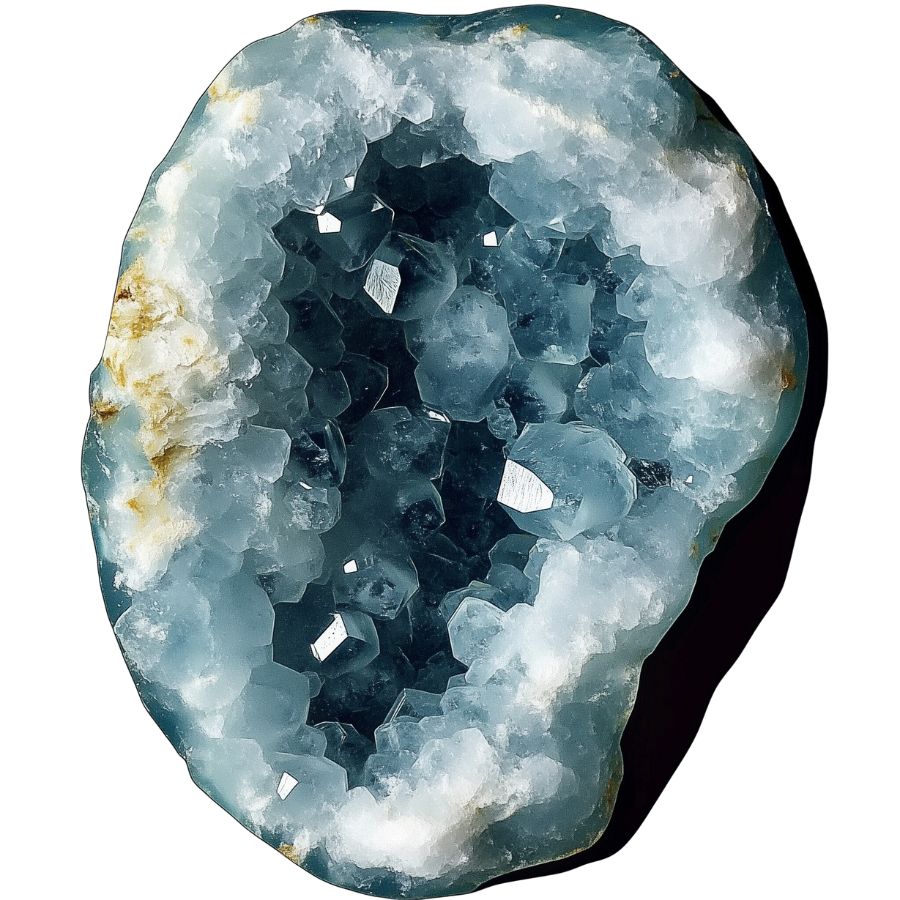
Celestite geodes are like pieces of sky trapped in rock. Their crystals are typically a delicate blue, ranging from almost colorless to deep sky blue. In rare cases, celestite can form in other colors. Pink celestite is highly prized by collectors.
One unique feature of celestite is its perfect cleavage. This means the crystals can be easily split into rhombohedral shapes.
These geodes form in a unique way. They start as nodules of a soft mineral called alabaster. Over time, this dissolves and is replaced by celestite crystals. Some celestite geodes are huge, like the famous Crystal Cave in Ohio.
Celestite isn’t just pretty to look at. It’s used to make strontium, an element with many uses. You’ll find strontium in fireworks, where it creates red colors. It’s also used in making TV screens and ceramics.
Jasper Geode
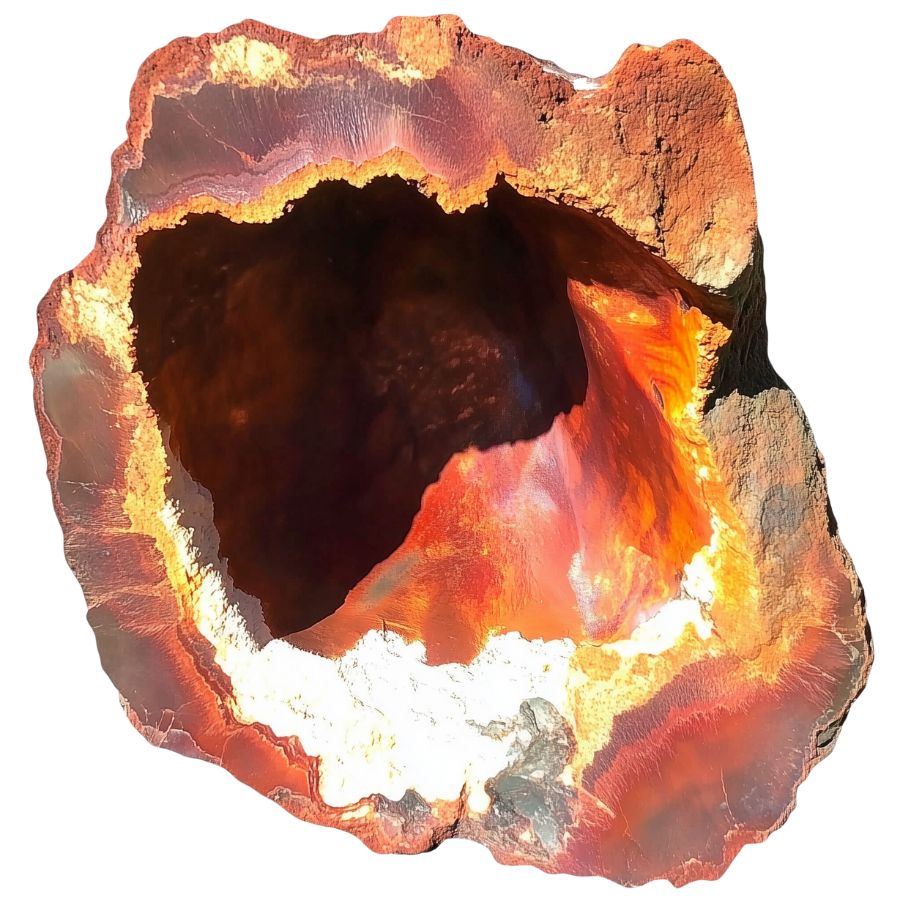
Jasper geodes are the chameleons of the mineral world. They can appear in almost any color, often with multiple hues in a single specimen. Patterns can range from solid colors to intricate swirls, bands, or spots.
One fascinating type is picture jasper. These geodes contain patterns that resemble landscapes, with “skies,” “mountains,” and “rivers” visible in the stone. Each one is like a miniature painting created by nature.
Some jasper geodes contain orbicular patterns – spherical structures that formed as the jasper solidified. These create eye-catching bull’s-eye or flower-like designs in the stone, making each piece truly one-of-a-kind.
Carnelian Geode
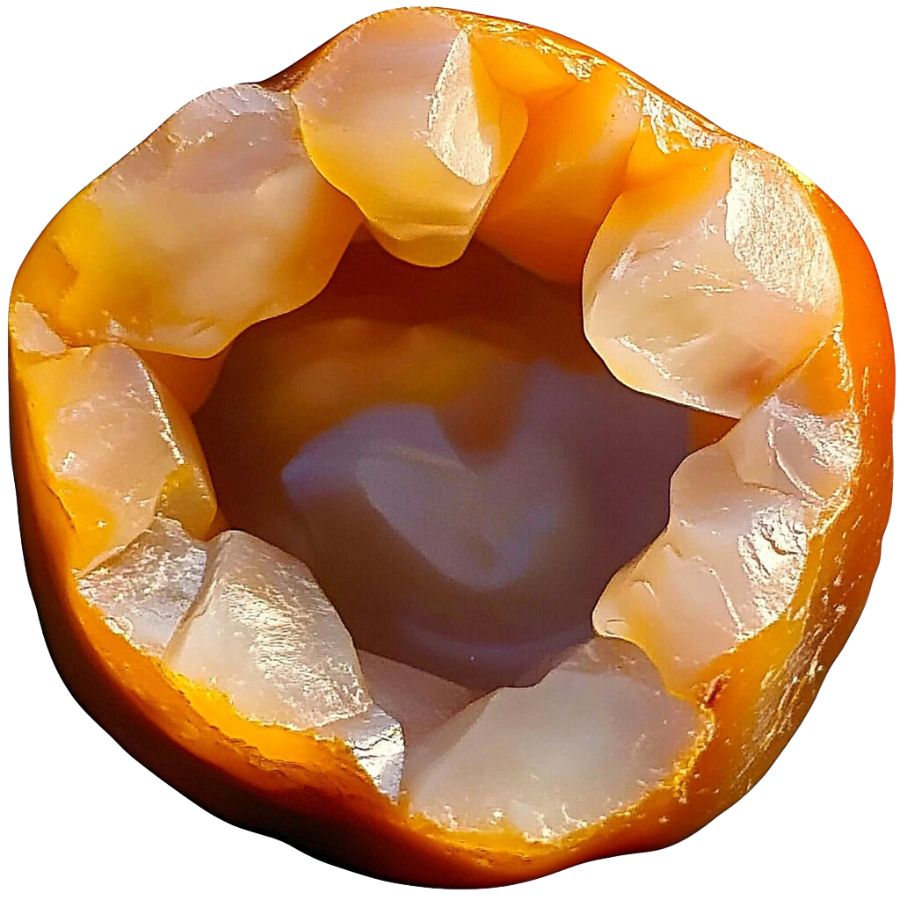
Carnelian geodes have vibrant orange to reddish-brown colors. They can be somewhat see-through, which makes them look even more interesting. The bright colors come from the iron in the stone.
These geodes stand out from other similar stones. They’re brighter than sard, which is usually darker and more brownish. And unlike agate, carnelian doesn’t have bands or stripes.
Carnelian has been popular for a long time. Ancient Egyptians and Greeks used it to make special rings. It’s tough enough for everyday jewelry.
Some people heat or dye carnelian to make its color even brighter. This makes it a favorite for both rock collectors and jewelry lovers.
Fluorite Geode
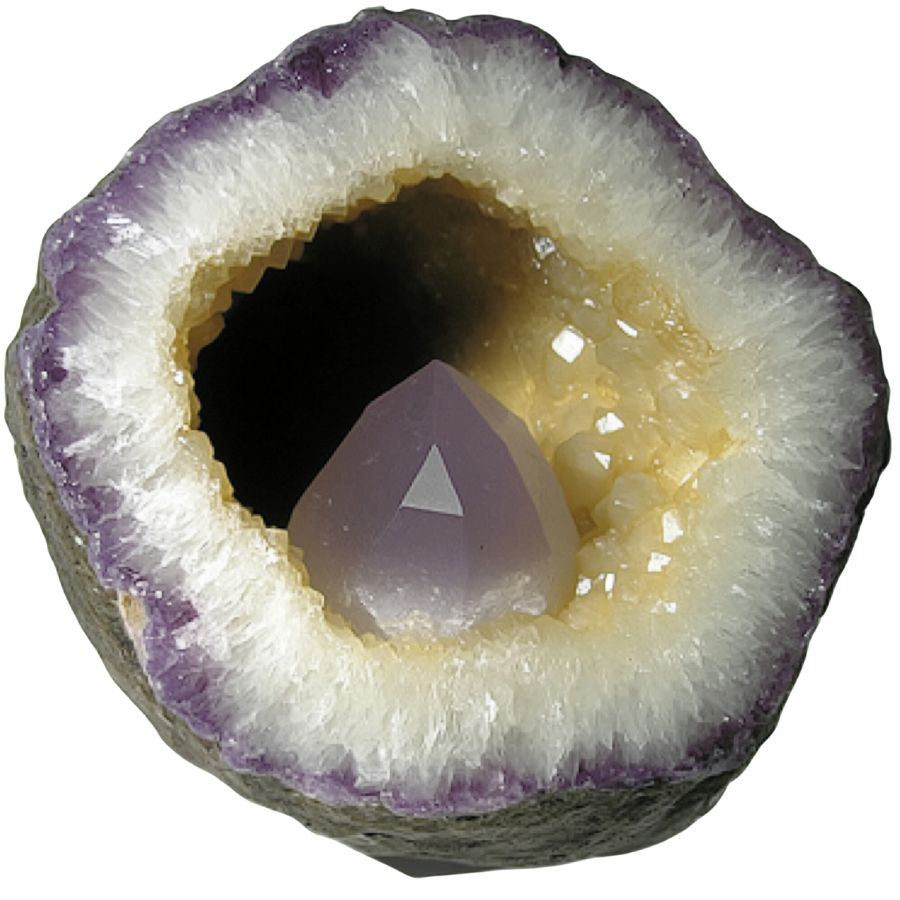
Fluorite geodes are like nature’s rainbow. They come in many colors – purple, green, blue, yellow, and sometimes even clear or black. When you open one up, you might see cube-shaped or eight-sided crystals inside.
What makes fluorite special is that you can often see more than one color in a single stone. This is different from many other geodes. Also, fluorite has a unique way of splitting when it breaks.
A cool fact: fluorite glows blue under ultraviolet light. This was first discovered back in 1852. Because of its many colors and this glowing ability, fluorite is sometimes called the “most colorful mineral in the world.”
Scolecite Geode
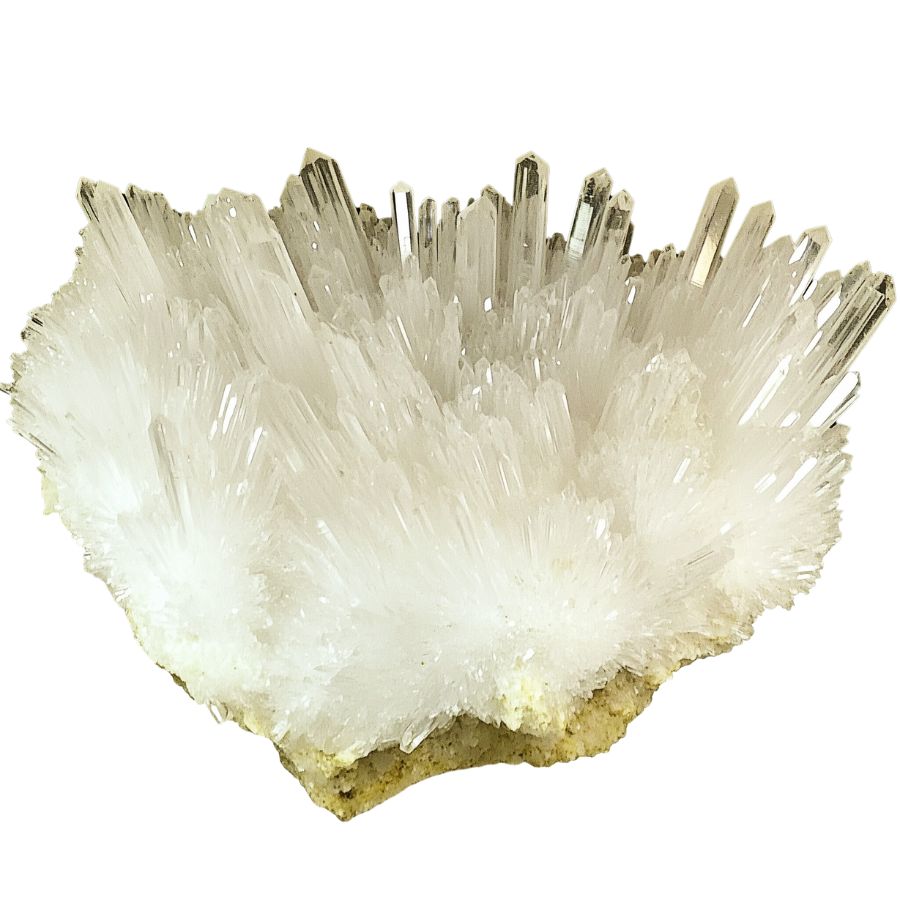
Scolecite geodes are like tiny crystal caves. They’re usually white or colorless, but sometimes you might find pink, yellow, or green ones.
What makes them special is the crystals inside. They look like thin needles or delicate hairs, all pointing out from the center.
These geodes are different from others because of their crystal shape. Instead of blocky or chunky crystals, scolecite has these fine, hair-like ones. This gives them a unique, delicate look.
Scolecite has an interesting property – it can hold a lot of water in its structure. This means it can absorb and release water easily. This makes scolecite useful in various ways, not just as a pretty rock to look at.
Apophyllite Geode
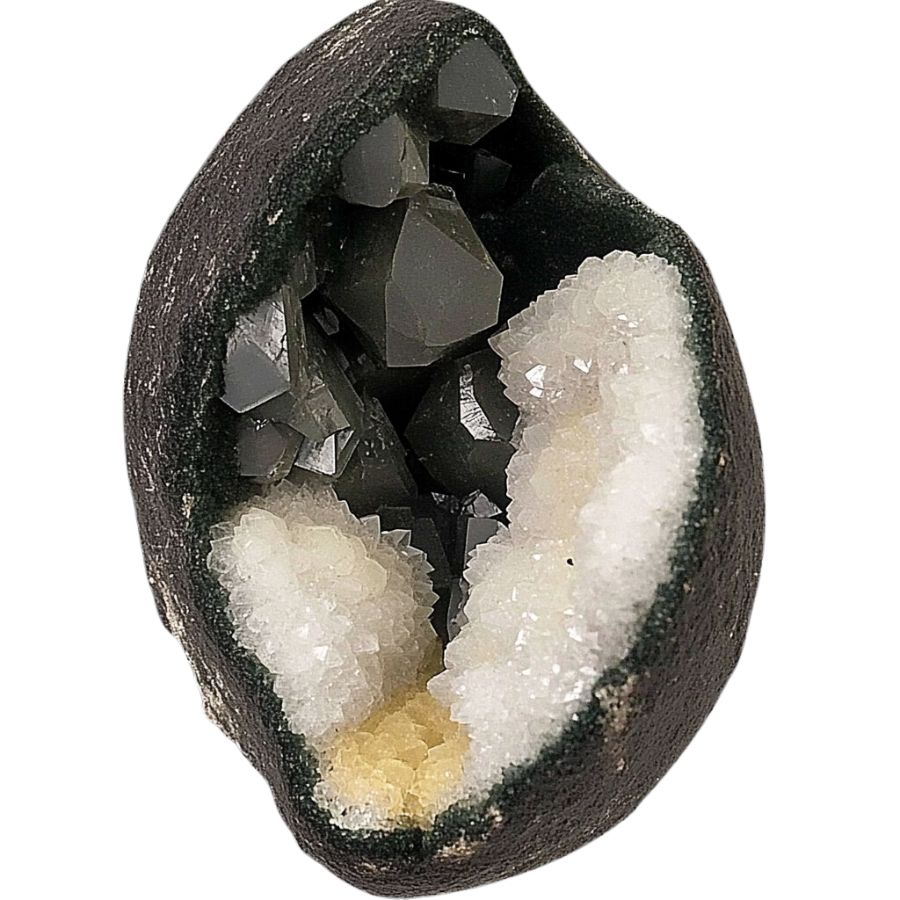
Apophyllite geodes are like nature’s disco balls. They often have dark or black crystals inside a hollow rock. These crystals can be see-through or slightly cloudy, with cube-like or flat shapes.
What makes apophyllite geodes stand out is how the crystals form. They grow in round clusters that look like tiny disco balls. This unique formation is rare and makes them special to rock enthusiasts.
Collectors really prize these “disco ball” clusters. They’re not common, which makes them valuable to people who love unusual rocks. The way apophyllite crystals catch and reflect light adds to their appeal, making them fascinating to look at and study.
What Rough Geode Looks Like
Identifying a rough geode might seem tricky, but with a few tips, you can spot one even if you’re not a rock expert. Here’s how you can do it.
Look for a Rounded Shape
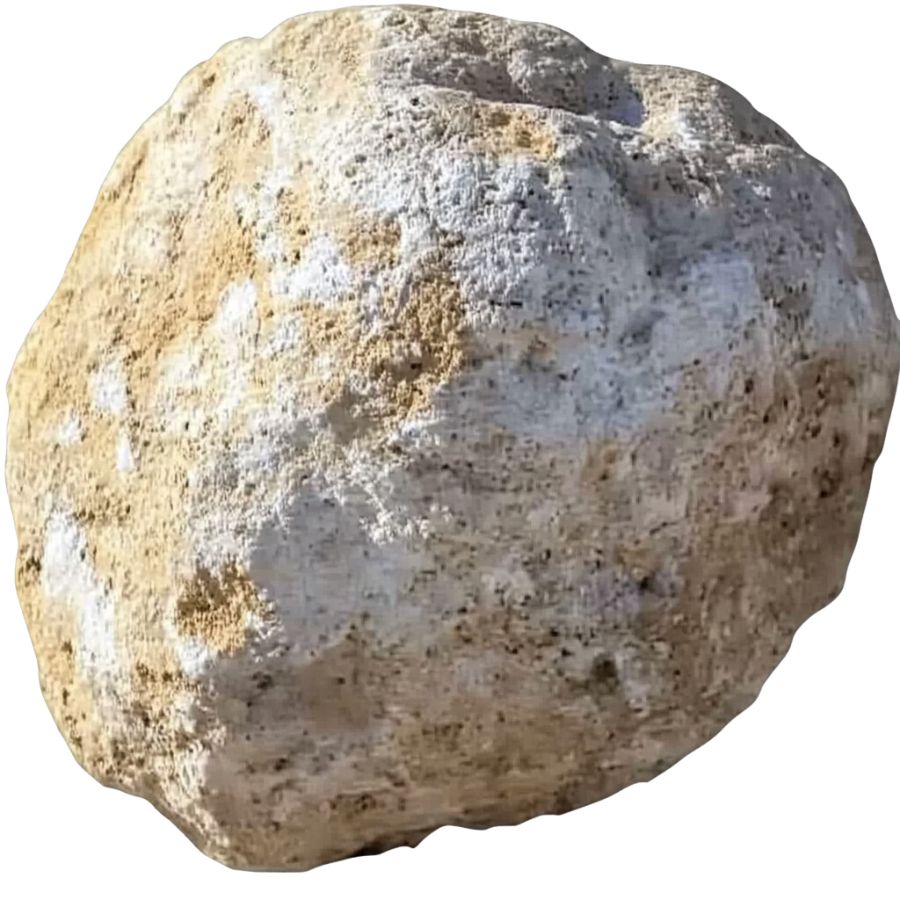
A rough geode often has a rounded or egg-like shape. It might not be perfectly round but look for a generally bulbous form.
When you’re out searching, skip the flat, jagged rocks. Geodes usually have smoother exteriors because they’ve been rolling around in rivers or other environments for a long time.
Check for a Dull, Bumpy Surface
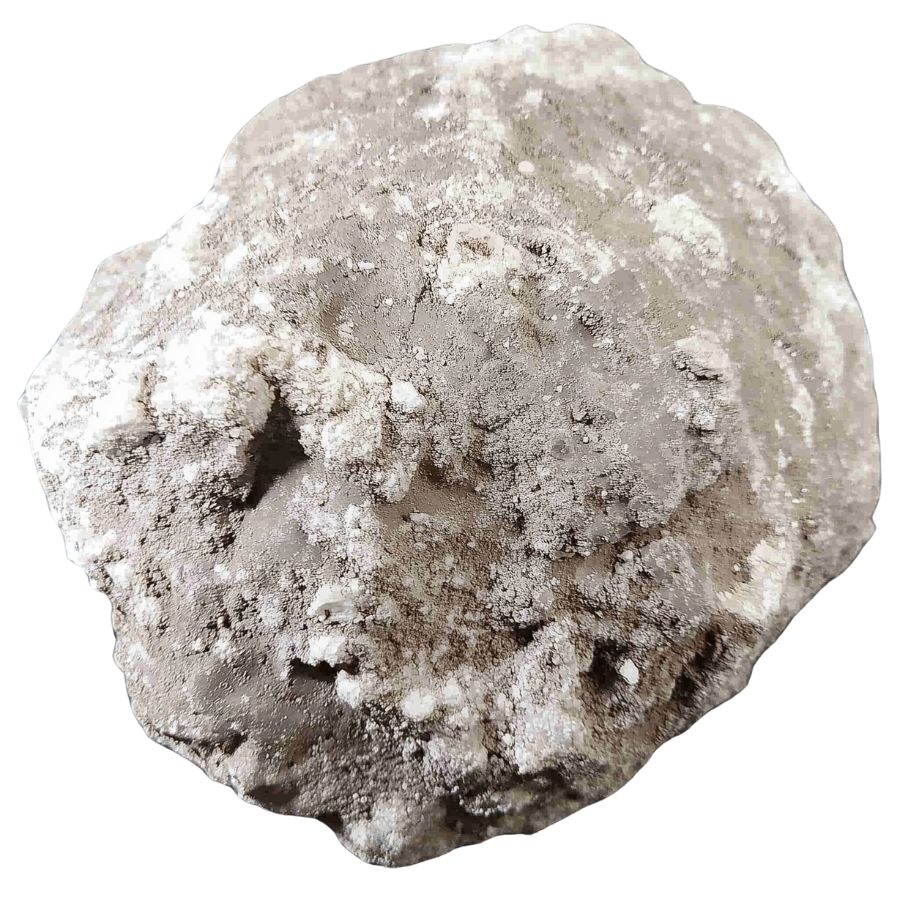
The outside of a geode isn’t usually shiny. Instead, it’s dull, bumpy, and a bit rough.
Imagine a potato or a clump of dirt with some bumps and dents. That’s how a geode might look before it’s cracked open.
The outside won’t give away much of what’s inside, so don’t be fooled by its ordinary appearance.
Test the Weight
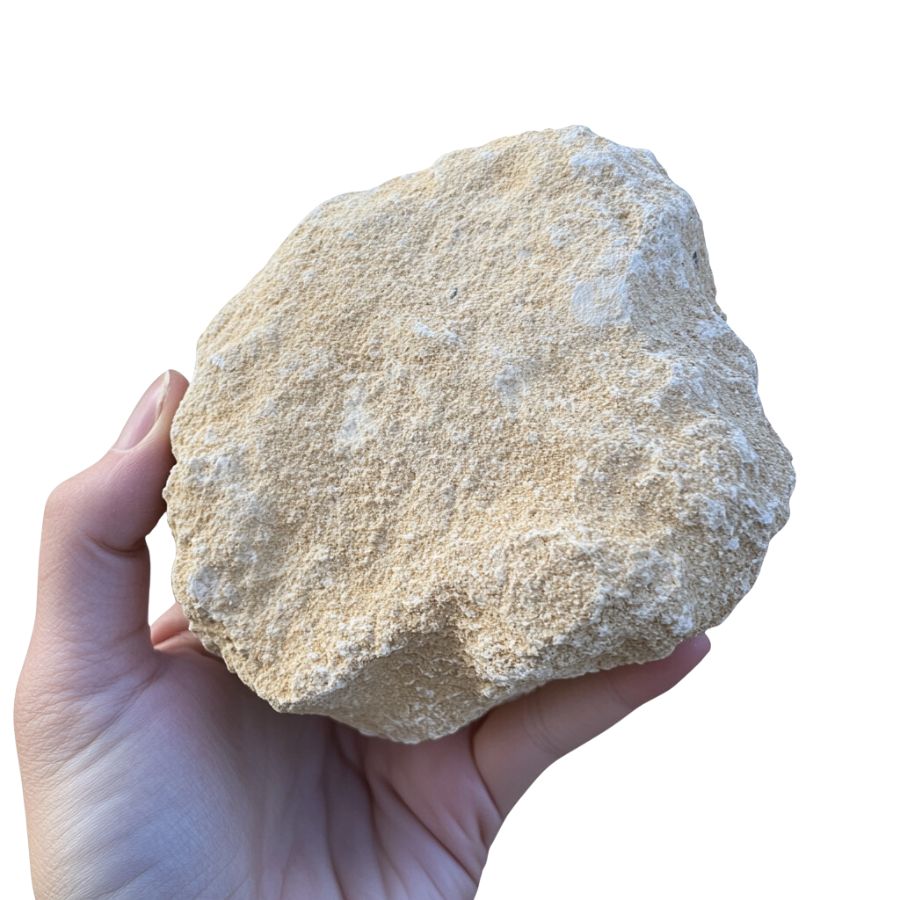
Pick up the rock. Does it feel lighter than it looks? That’s a good sign!
Geodes are hollow or partially hollow, which makes them lighter than solid rocks of the same size. If it feels unexpectedly light, you might have found something special.
Look for Tiny Crystals or Mineral Patches
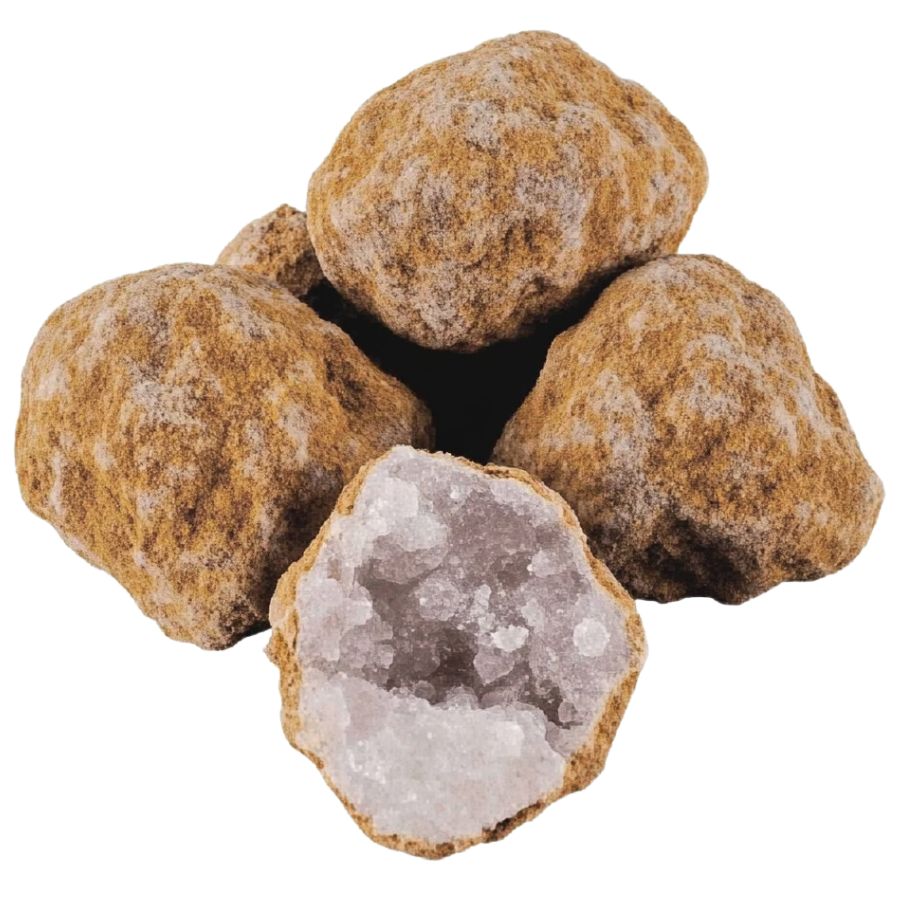
Sometimes, you can spot small crystals or mineral deposits on the outside. These could look like tiny sparkles or specks of color.
While the outside of a geode is usually dull, a little peek of what’s inside might show through. Keep an eye out for these hints, especially if you’re in a known geode-rich area.
Tips on Where to Look
Once you get to the places we have listed below there are some things you should keep in mind when you’re searching:
Explore Riverbeds and Streams
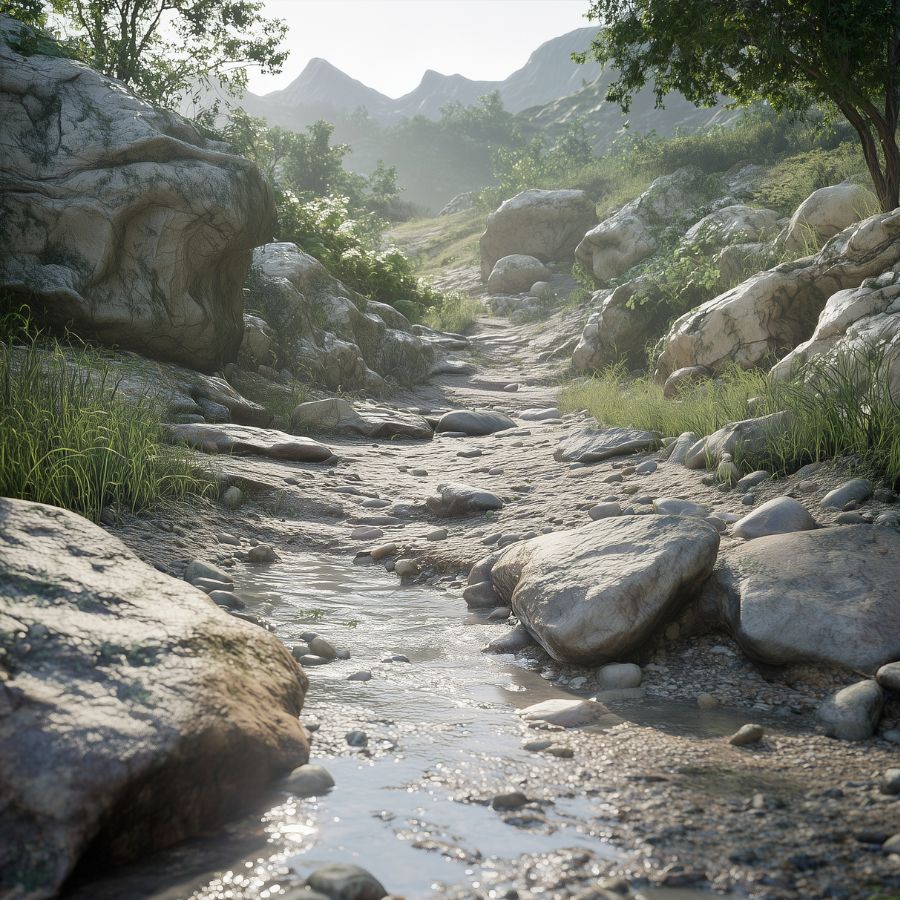
Geodes often form in riverbeds or streams. Water flow smooths out their rough edges and deposits them in these areas.
When exploring, focus on gravel bars or the edges of rivers where rocks naturally gather.
Search in Sedimentary Rock Layers
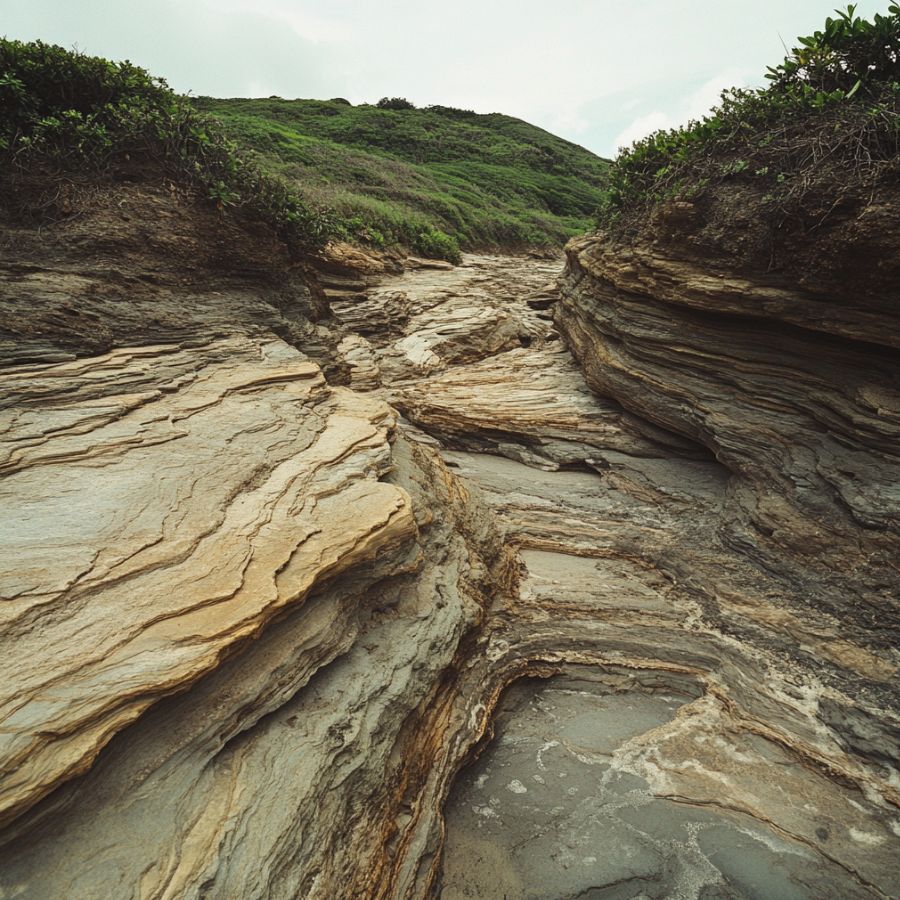
Sedimentary rocks, like limestone, are prime spots for geodes. These rocks form in layers over time, trapping minerals inside.
Look for areas where sedimentary rocks are exposed, such as cliffs or road cuts.
Visit Old Mines or Quarries
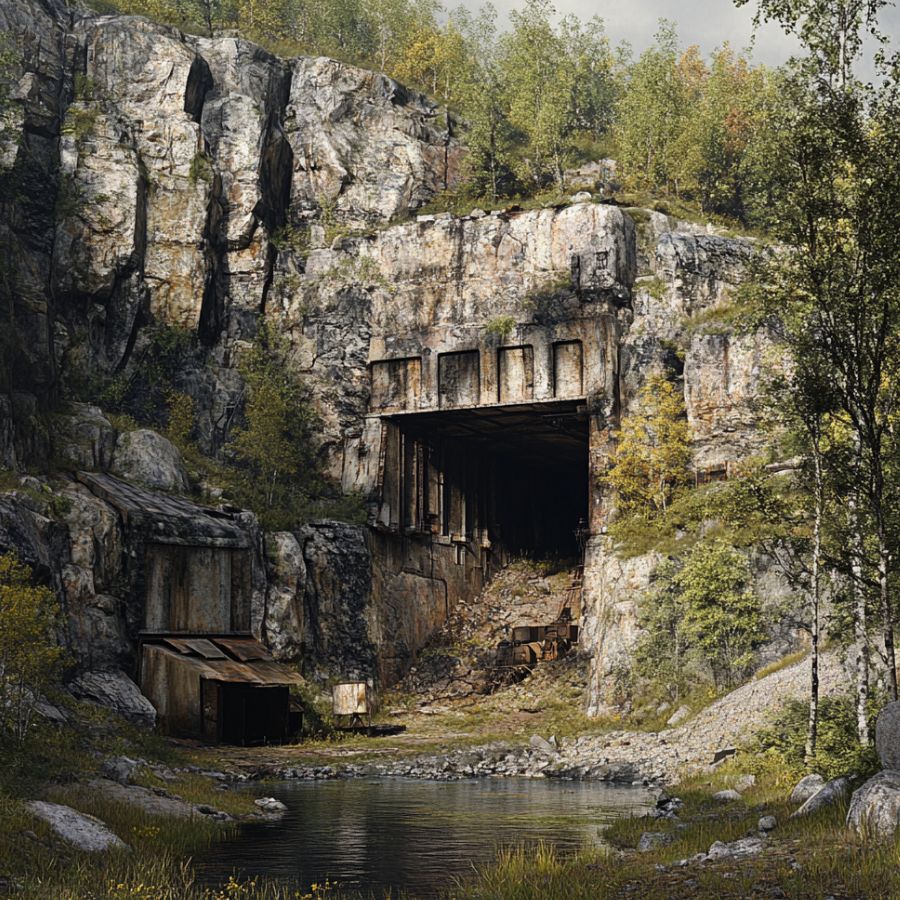
Abandoned mines and quarries are excellent spots for geode hunting.
Workers often missed geodes while digging for other materials. Explore the tailings or leftover rock piles for hidden treasures.
Explore Hills and Rock Outcrops
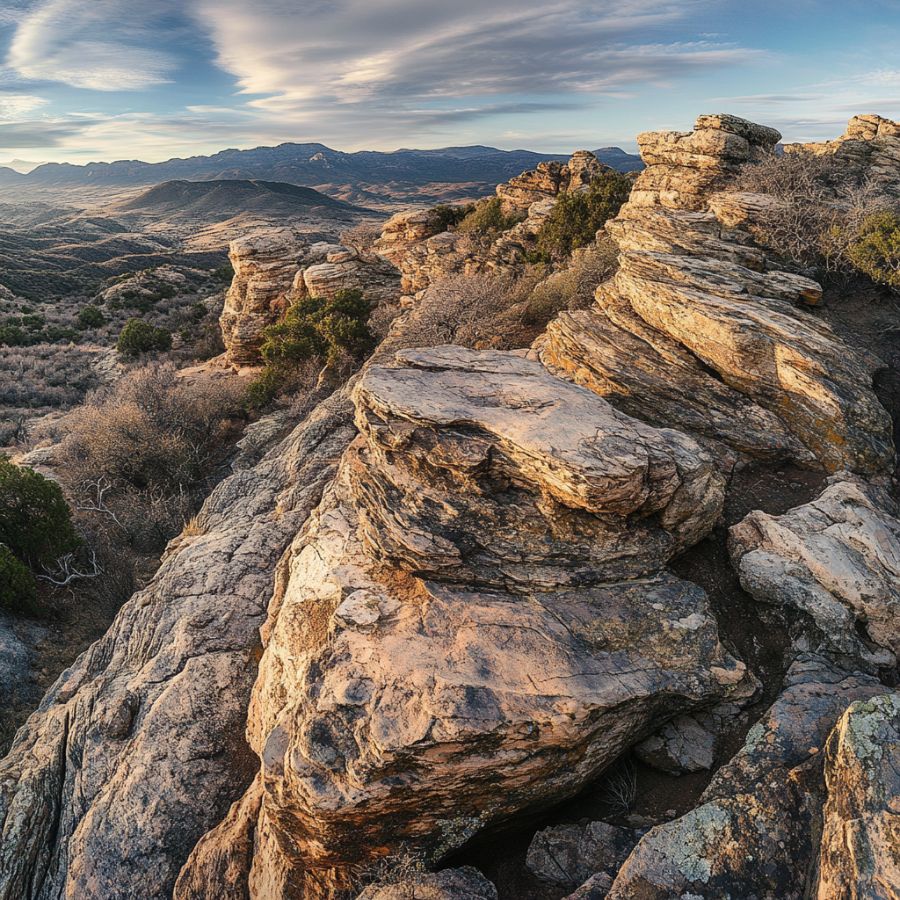
Hills and rocky outcrops often reveal geodes. As erosion wears away the softer rock, it exposes the harder geodes.
Look for areas with exposed rocks and keep an eye out for rounded shapes.
The Types Of Geodes Found In Nebraska
Geodes are a familiar sight anywhere in the world. How much a geode is worth and its charm is influenced by the kind of crystal that is inside it. Nebraska is home to the following geodes:
- Agate geodes
- Celestite geodes
- Quartz geodes
The Best Places To Find Geodes in Nebraska
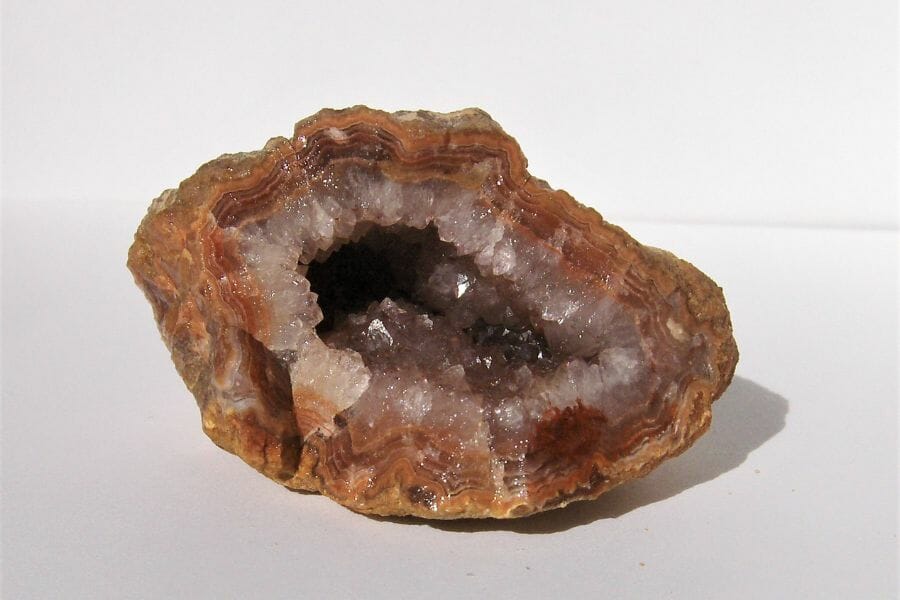
You might now know where to mine for gems in Nebraska. Unfortunately, not all of them contain geodes. While the locations we’ll discuss with you below might not be as well-known, they are by far the best sites to visit if you want to go geode hunting in this state.
Blue River
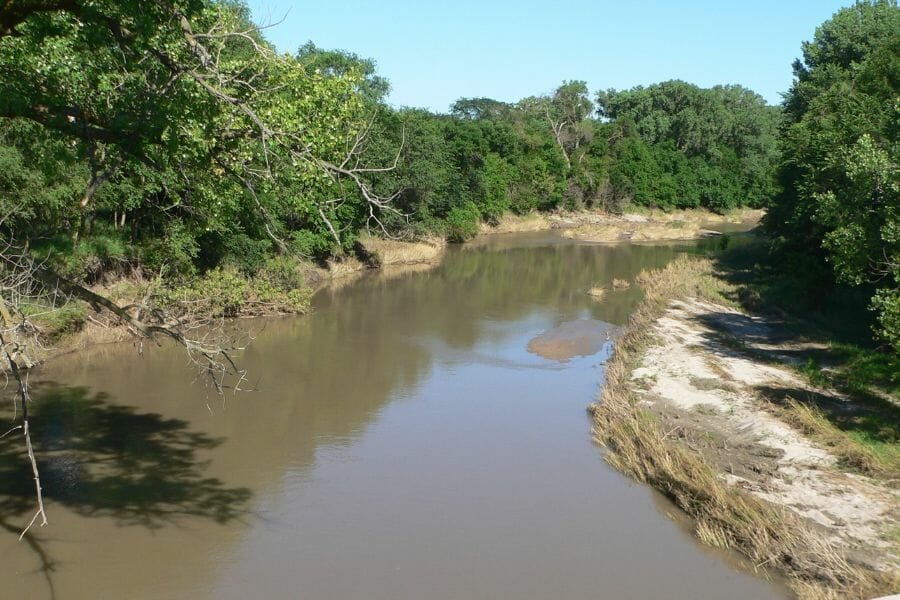
Blue River is a beloved destination for outdoor enthusiasts in Nebraska. The river runs for over 60 miles through the southeastern part of the state, winding its way through picturesque hills and valleys. The Blue River’s geological history is an interesting one. The river flows through limestone and sandstone formations, which have eroded over time to create the stunning cliffs and bluffs that line the riverbanks.
The terrain around the Blue River is varied, with rocky cliffs, lush forests, and rolling hills. The river itself is relatively shallow and slow-moving in most places. The Blue River is also a popular destination for rockhounding, as the limestone and sandstone formations around the river are known to contain geodes, agates, and other interesting rocks. Because of its stunning geology and beautiful scenery, it’s no wonder why so many people in Nebraska hold this river close to their hearts.
Before making any geode hunting plans, make sure to review the most updated Nebraska State collecting regulations.
Where we found geodes in the Blue River
We have discovered that geodes are widely distributed on the east banks of the Blue River.
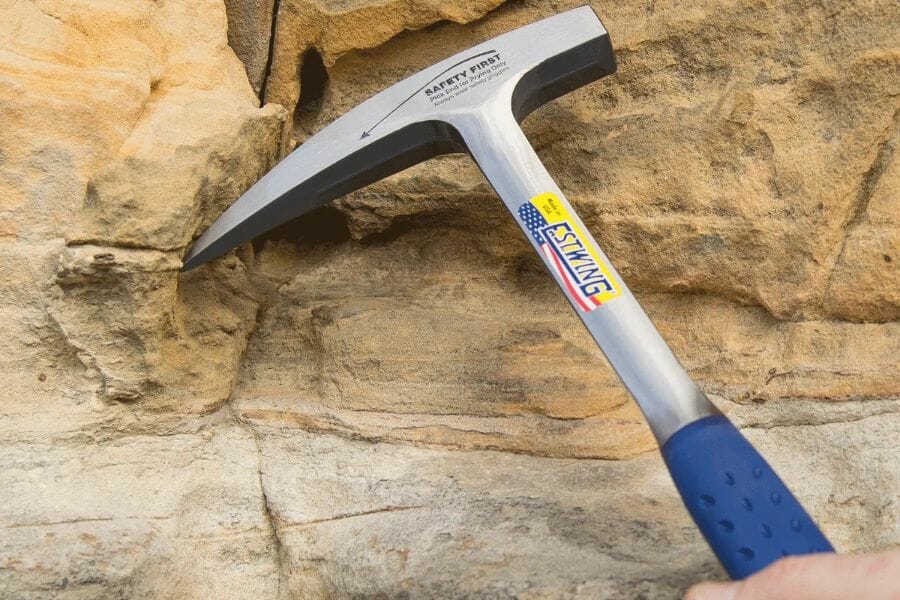
The tools every geode hunter will need
When you're out looking for geodes having the right tools for the job is very important. You don't need a lot for most trips but there are a handful that are critical and will make your life a lot easier.
We get asked a lot about the equipment we use. Over the years we've found a handful of tools that we recommend to both new and experienced geode hunters which we outline in great detail in our complete rockhounding tools and kit guide. These are quality options that also happen to be relatively inexpensive.
Below are the basic tools that make your life so much easier and save you a ton of time. Check out the full guide to see everything we recommend bringing. One quick note, as an Amazon Associate I earn from qualifying purchases but we try very hard to only recommend gear we would use ourselves and often recommend brands you can't find on Amazon.
At a minimum you should have:
1 - Sturdy rock hammer: The Estwing Rock Pick is our standard
2 - Rugged chisels: Try Kendo' 3-piece Chisel Set
3 - Compact shovel: The Koleiya 28-inch shovel works well
4 - Rock screen pan: The Wazakura Soil Sieve Set fits the bill
5 - Eye protection: DeWalt Safety Glasses are cheap and comfortable
6 - Head protection: Malta's Safety Helmet has been our go-to
7 - Jewelers lens with at least 20x magnification: Jarlink's Jewelers Loop is perfect
The geode-finding books that we use most
There are also a few books that have been extremely helpful in the search for gems. These books have great recommendations and tips:
National Audubon Society Field Guide to Rocks and Minerals: North America
Northwest Treasure Hunter's Gem & Mineral Guide
Earth Treasures: The Northwestern Quadrant
We provide links to find these tools on Amazon but some can also be found at your local hardware stores. For more recommendations check out the link to our full tool guide above.
Dawes County
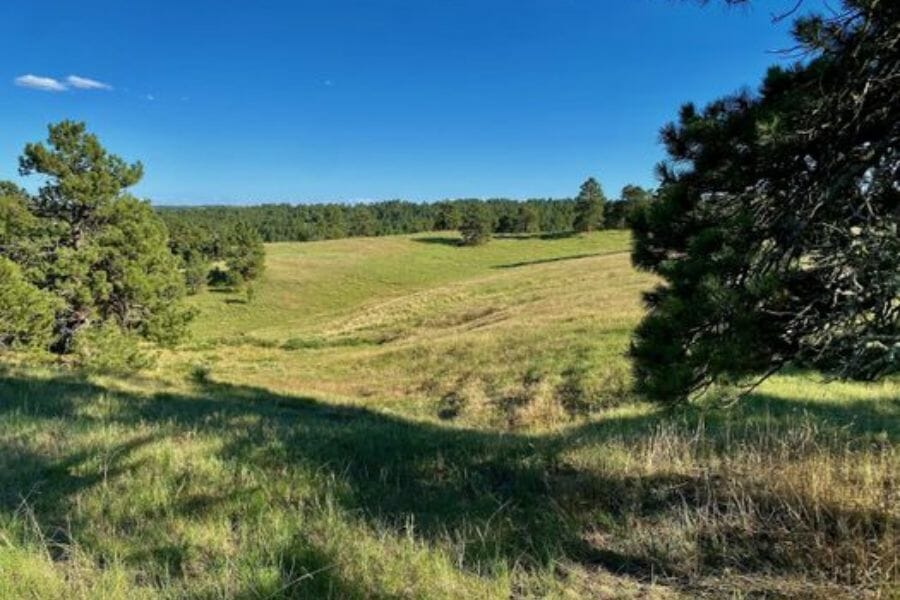
Dawes County is a picturesque region located in the northwestern part of the state. The county covers a wide range of different landscapes, from the rugged hills of the Pine Ridge region to the rolling prairies that stretch out towards the horizon.
The geology of the region is equally diverse, with everything from volcanic ash deposits to sedimentary rocks on display. The Pine Ridge region in particular is known for its unique geology, which includes ancient lava flows, sandstone formations, and other interesting geological features.
Where we found geodes in Dawes County
- In the Crawford area, vast beds start at 15 to 20 miles northwest and north-northwest.
Gage County
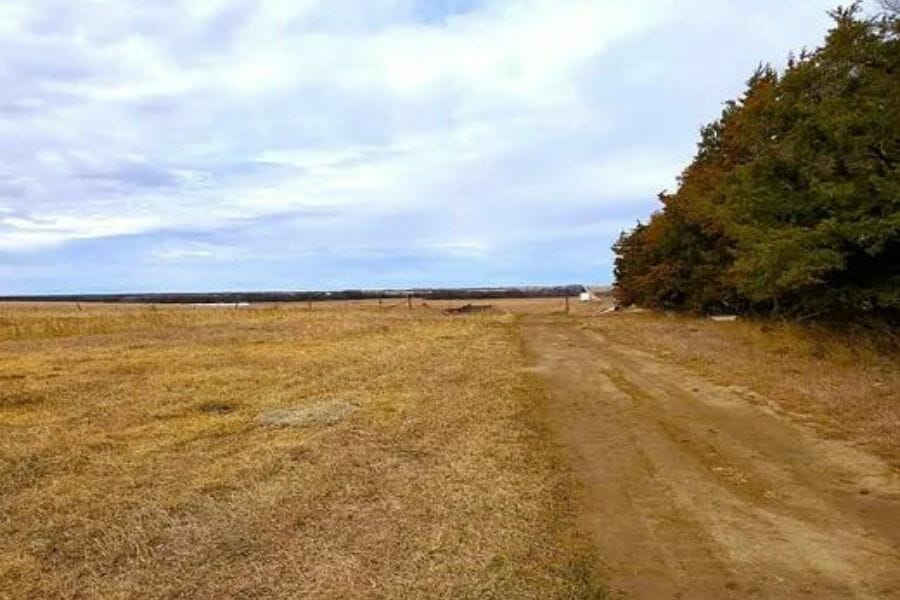
Gage County is a beautiful region located in the southeast of Nebraska. The county is home to some interesting geological features, including a number of limestone formations that are popular with rockhounds and geology enthusiasts. The county is also bisected by the Big Blue River, which winds its way through the region and provides a number of recreational opportunities.
The terrain of Gage County is relatively flat, with gentle hills and wide open spaces dominating the landscape. The county is also home to a number of small lakes and wetlands, which provide important habitats for a variety of different plant and animal species.
Where we found geodes in Gage County
- In the Barneston area, 3 miles north-northwest, on the east bank of the Big Blue River.
- In the Holmesville area, southwest at a quarry next to the west bank of the Big Blue River, where geodes are rich.
- In the Wymore area, southeast 3 miles, quarry on the east bank of Blue River.
- In the Wymore area, southwest of Holmesville, quarry on the Blue River.
Sioux County
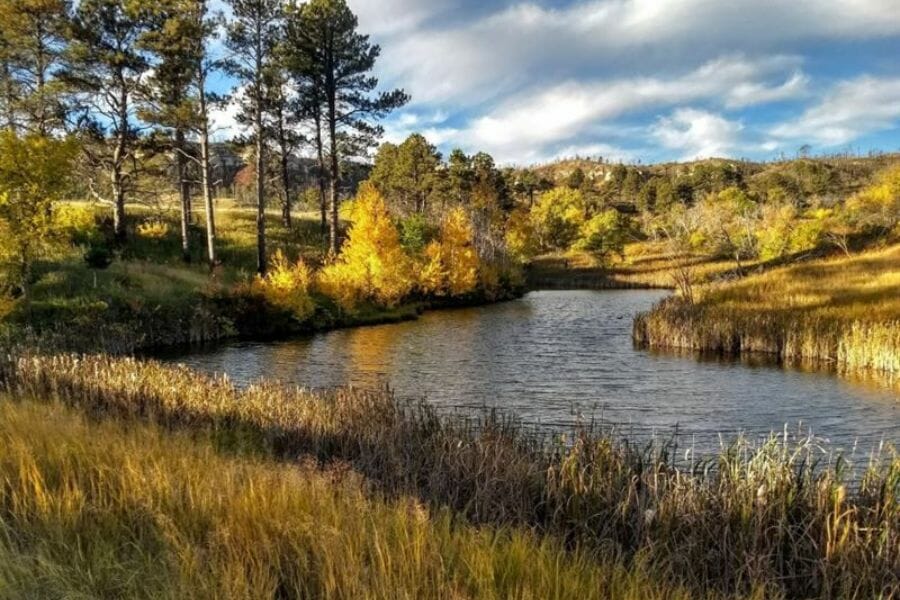
Sioux County is a unique region located in the northwestern corner of Nebraska. The county covers a vast area, with everything from sand dunes to rolling hills to rugged canyons on display. The geology of the region is equally diverse, with everything from ancient lava flows to sedimentary rocks to fossils from millions of years ago.
The terrain of Sioux County is relatively rugged, with steep canyons and rocky outcroppings making up much of the landscape. The county is also home to a number of small lakes and wetlands, which provide important habitats for a variety of different plant and animal species. Sioux County is a popular destination for hikers and rock collectors, who come to explore the region’s remarkable geological features up close.
Where we found geodes in Sioux County
- Collect geodes in the canyon wall and below them in the Orella Station region.
Common Geode-Hunting Questions
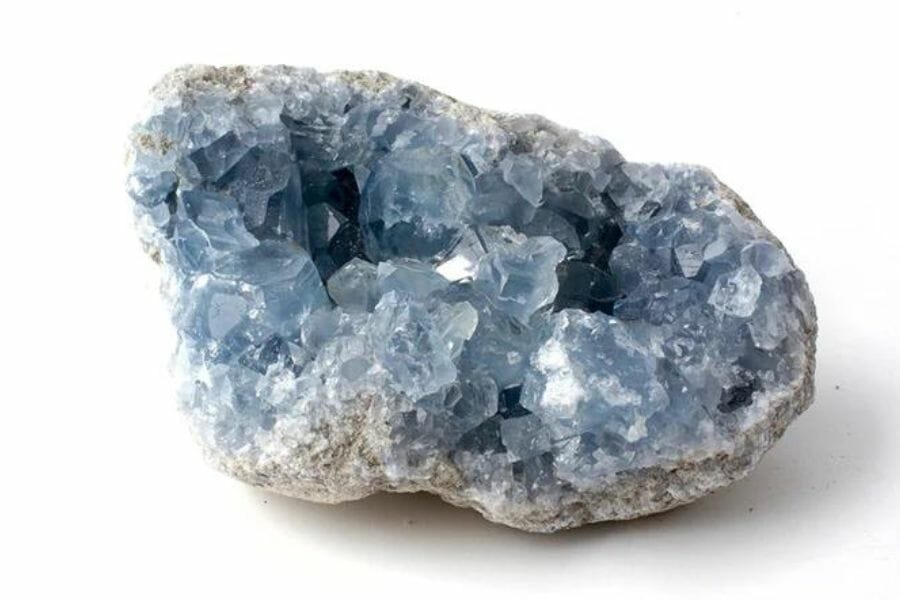
We discovered a number of questions that geode collectors frequently ask. We figured you might be wondering the same things, so we’ll address them here!
Where can you find amethyst geodes in Nebraska?
Unfortunately, Nebraska does not naturally contain amethyst geodes, but if you’re eager to acquire one, we’ve included some of the top local rock shops where you can find them below.
Is it illegal to collect geodes in Nebraska?
You shouldn’t have any problems gathering geodes here as long as you adhere to the applicable laws and regulations. But, it’s crucial to first review the local laws if you intend to collect geodes from public grounds. Also, it’s important to obtain permission before beginning any geode collection activities if you’re hunting at a private property.
The Best Places To Buy Geodes In Nebraska

For geode collectors, discovering geodes in their natural setting is an incredible experience. But, not everyone is able to bear the exhaustive hunt for them. If you fall into this category and wish to purchase geodes without making a lot of effort, we can assist you.
Here is a list of some of the best rock shops in the state where you can find and buy different kinds of geodes.
- Ambient Crystals Co – 529 N Main St #2, Fremont, NE 68025, United States
- Amazon – We also found that geodes are frequently available on Amazon. For those who would prefer to do it themselves, there are complete kits containing geodes to break apart.
- Awakenings – 3506 N 147th St Suite 101, Omaha, NE 68116, United States
- Custom Gems – 8487 Frederick St, Omaha, NE 68124, United States
- Next Millenium Books and Gifts – 3141 N 93rd St, Omaha, NE 68134, United States
- Prairie Agate Rock Shop – 3591 Crazy Horse Memorial Hwy, Crawford, NE 69339, United States
Additional places to find geodes in nearby states
Check out our guides for nearby states if you’ve already tried all of our suggestions above or if you’re planning a trip outside of the state:
- Geodes in Colorado
- Geodes in Iowa
- Geodes in Kansas
- Geodes in Missouri
- Geodes in South Dakota
- Geodes in Wyoming
If you have any recommendations for our list please leave a comment below!

